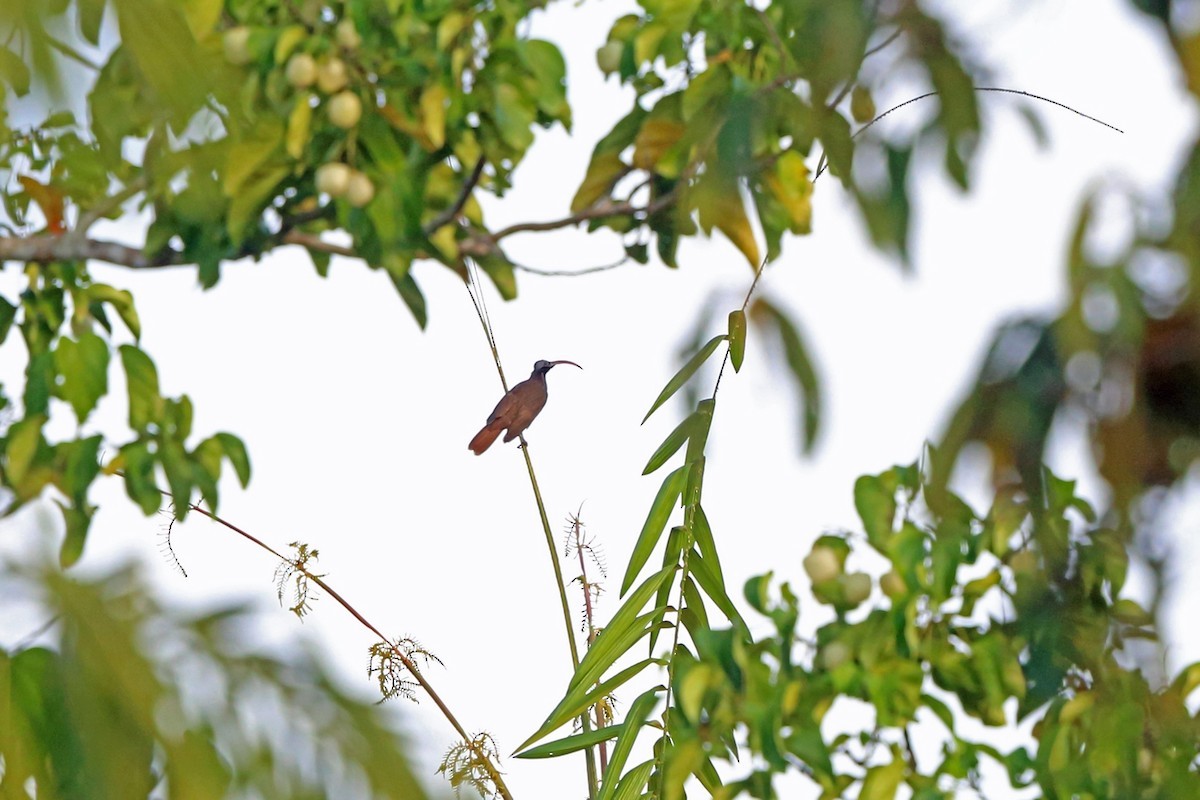Pale-billed Sicklebill
A species of Short-tailed sicklebills Scientific name : Drepanornis bruijnii Genus : Short-tailed sicklebills
Pale-billed Sicklebill, A species of Short-tailed sicklebills
Botanical name: Drepanornis bruijnii
Genus: Short-tailed sicklebills
Content
Description General Info
 Photo By Nigel Voaden
Photo By Nigel Voaden Description
The pale-billed sicklebill is medium-sized, about 35 cm long, olive brown. The male has a bare purple grey skin around its eye, brown iris, pale sickle-like bill, an iridescent red and purple-tipped upper breast plumes, blue and green-tipped ornamental lower breast feathers and purple small horn-like brow feathers. The unadorned female is smaller and paler than the male. 
Size
34 - 35 cm
Nest Placement
Tree
Feeding Habits
Pale-billed Sicklebill primarily consumes fruits, especially drupes, and arthropods, often foraging in the canopy but will join mixed-species flocks in the understory. This bird is notably more frugivorous than its relative, D. albertisi, showing a unique dietary preference.
Habitat
The pale-billed Sicklebill primarily inhabits lowland rainforests, thriving in both pristine and disturbed environments, including areas affected by selective logging. These birds are also known to occupy forested regions on limestone hills.
Dite type
Frugivorous
General Info
Feeding Habits
Bird food type

Fruit
Behavior
The pale-billed sicklebill is distributed to lowland rainforests of northern and northwestern New Guinea. Its diet consists mainly of fruits and arthropods. Due to deforestation and habitat lost on this limited range species, the pale-billed sicklebill is evaluated as Near Threatened on the IUCN Red List of Threatened Species. It is listed on Appendix II of CITES. 

 Photo By Nigel Voaden
Photo By Nigel Voaden Scientific Classification
Phylum
Chordates Class
Birds Order
Perching birds Family
Birds-of-paradise Genus
Short-tailed sicklebills Species
Pale-billed Sicklebill